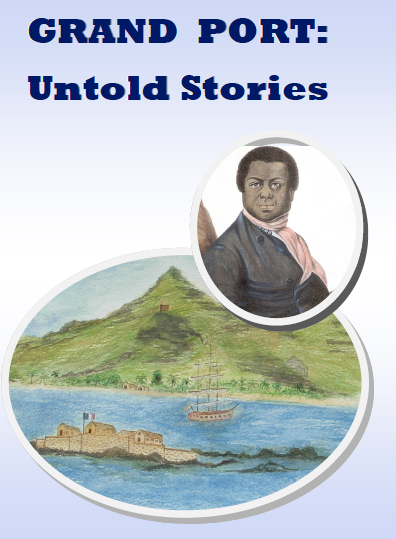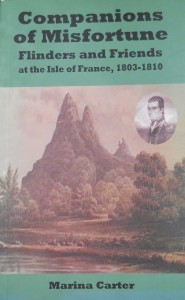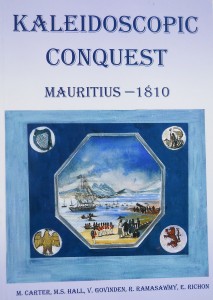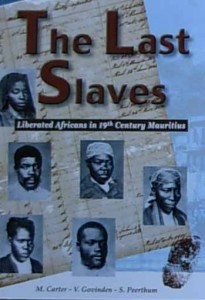A Selection of Publications by Marina Carter
For further information and to purchase any
of these books please visit http://www.pinkpigeonpress.com/
Women and Indenture

Women and Indenture offers a unique insight into the experiences of Indian women migrants under the indenture system which operated from the 1840s until the early 20th century. The largest recipient of Indian indentured migrants was Mauritius, where a majority of the population are today descended from these labourers.
Guyana, Trinidad, Fiji and Natal were also important recipients of indentured workers and the French sugar colonies also received some migrants under this scheme.
The volume makes extensive use of archival records to describe the working and personal lives of women under indenture.
The book demonstrates the key contribution of women to the economies and societies where they settled and provides important insights into their struggles to overcome discrimination and inequality both in their personal relationships with male partners and families and vis-a-vis the colonial state.
Kaleidoscopic Conquest: Mauritius – 1810
The British conquest of the French controlled island of Mauritius was an event of global significance. The fall of the “Isle of France” in 1810 was the Indian Ocean equivalent of the Battle of Trafalgar, which took place just five years before. Accounts of the conquest have usually focused on the perspectives of the two empires which were the main protagonists in the encounter, Great Britain and Napoleonic France.
Yet the takeover of Mauritius was of enormous significance for the people living on the island, most of whom were neither French nor British. Furthermore, the opposing land and naval forces at the time of the conquest were composed of large numbers of combatants who were not even European. The conquering British army was overwhelmingly Indian, and participants on both sides also came from Africa, Europe and even the Americas. The multicultural, multilingual and multi-ethnic clash in Mauritius in 1810 was a truly Kaleidoscopic Conquest.
The conquest followed years of blockade which also left their mark on the islands; shortages of manpower, provisions and commodities of every kind had produced distress and disaffection. The increasingly audacious activities of the encircling British squadron and the growing likelihood of a change of government were a source of anxiety but also offered a glimmer of hope to many.
And the change, when it did come, in December 1810, brought with it a kernel of the new era. Aboard the ships were Bengalis and Biharis, Marathas, Tamils and Telegus, among many others of diverse nationalities. Gujarati, Parsi and south Indian traders had supplied the transport vessels and victuals for the huge invading army – they would not be slow to take advantage of the new opportunities British conquest offered as the huge resources of British-controlled India were opened up to the Mauritians.
The small communities of Chinese settled in the port towns of British India would be among the first to arrive in search of fresh markets and better-paid employments. The transition to British rule seemed to herald a new era of prosperity. And many expected social change as well. French colonial society was riddled with discriminatory practices and policies: the coloureds craved a more equal status and the slaves aspired to freedom.
The present volume is divided into four sections. Part One deals with the people who were involved in 1810 in order to provide an overview of the diversity of cultures and nationalities participating in the events leading up to the conquest of the island. Soldiers, sailors, whites and blacks, juveniles and adults were all exposed to the inequalities and injustices of that era, which could include physical punishments and periods of forced labour that we would consider shocking today. Their stories help to personalize and bring to life forgotten aspects of the experiences of our ancestors. The second part of the book draws upon the letters, sketches and memoirs of eye witnesses to provide a detailed understanding of what really happened during the final days of the Isle of France. Part Three considers the fates of the participants of the conquest in the aftermath of 1810 and Part Four asks questions of the archives and of the past. What stories do the private letters and public documents discussed in these pages reveal about the measures taken by Decaen and Farquhar? In what ways can research into the lives and destinies of the participants of those events 200 years ago help us understand the evolution of modern Mauritius? By offering a glimpse into this vanished world, Kaleidoscopic Conquest underscores the importance of 1810 – it holds the key to the subsequent history of colonial and independent Mauritius. The historical treasures which continue to emerge both from the archive and from the ground itself must be valorised, preserved and discussed in order to derive practical lessons for the future and to honour the memory of those who have gone before.
GRAND PORT: UNTOLD STORIES

This book relates unknown and neglected aspects of a famous battle which took place off the coast of Mauritius in August of 1810.Grand Port: Untold Stories unravels the most important mystery of the entire saga – the identity and role of the ‘black pilots’.One of these pilots, who ably served the British Navy in the battle, met a particularly tragic end.
Many years later, this man’s fate would lead his former commander, Captain Nesbit Josiah Willoughby, on a quest for redemption.
Captain Willoughby’s search in turn let to the revelation of ‘Zistwar Jouan’, the story of Jouan.
Using largely unpublished sources, such as the narratives of Captains Samuel Pym and Lucius Curtis, and private letters of participants, Grand Port: Untold Stories restores the voice of the unjustly forgotten.
Companions of Misfortune. Flinders and Friends at the Isle of France, 1803-1810

Captain Matthew Flinders of the Royal Navy was one of the greatest cartographers of his time, and is credited with giving the continent and country of Australia its name. Yet it is not generally appreciated that he almost never completed his epic early nineteenth century voyage from Britain to Australia and back.
Flinders was forced to endure years of exile before being able to return home and publish his most important works. In 1803, while returning to Britain after the journey of discovery to the continent that he would later name, Flinders was imprisoned on the the Isle of France.
This was the name by which the small but important island of Mauritius in the southwest Indian Ocean was then known, as at that time it was under control of Britain’s deadly enemy, Napoleon Bonaparte’s Revolutionary France.
This book tells the little known story of the 6 ½ year exile of Matthew Flinders on this small island, and of the men and women whom he befriended there.
These were the tumultuous times of worldwide Anglo-French rivalry, and the Indian Ocean was an important theatre of this conflict. Flinders was detained in a remote colony which was encircled by a blockading British naval squadron which threatened the safety and the very subsistence of its French population. But as a prisoner of the French, Flinders found not only mutual tolerance and esteem but even deep and lasting friendship. His time in the isle of France is as stirring example of the nobility of spirit which can transcend cultural and national divides.
Companions of Misfortune, Flinders and Friends at the Isle of France, 1803-1810, is a book of 200 pages written by British historian Marina Carter. Companions of Misfortune analyses the occupations and distractions of the celebrated Captain Flinders while he lived in exile in the unique society that then existed at the Isle of France. The book furnishes new information gleaned from letters written to him by the many people, both male and female, whom he met and befriended while in exile in Mauritius. It is the only publication which has focused on this long period of Flinders’ life in exile. Companions of Misfortune is an essential book for anyone who wants a full understanding of the life of one of the great cartographers of the early 19th century, the man who named Australia, Captain Matthew Flinders.
Across the Kalapani: The Bihari Presence in Mauritius.

This book analyses the roots of Bihari migration from the 19th century to the present day and assesses the experiences of Biharis in Mauritius.
Uniquely in the Bihari diaspora, in the multi-ethnic, multi-ethnic and multi-cultural Republic of Mauritius, Biharis have become crucial power brokers.
Since Independence in 1968, every Prime Minister of Mauritius [bar one, during a brief power-sharing experiment] has been not only Indian but of Bihari descent.
Across the Kalapani brings together academics, activists and artists in a unique exploration of the overseas Biharis.
The illustrations, poems and archival sources which have been used in the book provide a new dimension to the story of the Bihari presence in Mauritius.
‘The Last Slaves’
- During the first half of the 19th century the British abolished first the slave trade and then slavery itself.
- Abolition brought Britain into conflict with other slave-exporting and slave-using nations. British naval vessels began to patrol areas where it was suspected Africans were being surreptitiously shipped into slavery.
- The slaves found on such captured ships were called ‘liberated Africans’ by the British.
- The ‘liberated’ Africans were usually taken to nearby British colonies where they were apprenticed to employers for long periods.
- They were not, in effect, freed at all, and historians have more recently coined the term ‘recaptive Africans’ to describe their plight.
Was the policy of confiscating and then apprenticing ‘liberated’ Africans a failed social experiment of the British authorities?
Or was it a cynical exercise in labour supply following the abolition of slavery?
This study looks at those who may truly be termed the ‘last slaves’, and provides an overview of the policy of ‘liberating’ Africans for employment in Mauritius in the 19th century.
The book reveals that the British certainly had mixed motives and that the policy was a flawed one.
The Africans were either allocated directly as apprentices or indentured labourers to local planters and other employers, or referred, for an initial period, to the Powder Mills Orphan Asylum.
The working, family and social lives of the ‘recaptives’ are described in the volume and the factors which contributed to their integration into the wider Creole community are discussed.
The authors note that despite the wealth of documentation, these last Africans slaves have been all but forgotten and hope that the book will serve as an ‘aide-mémoire’ for Mauritians.
To date no volume has been published which has been devoted to this subject in Mauritius.
This book therefore marks a significant step forward in this field, and it is hoped that it will be of much use to teachers and students of history on the island.
Unshackling Slaves: Liberation and Adaptation of Ex-Apprentices.

The 1st April 1839 was a momentous date in Mauritian history. It was the day appointed for the freeing of “praedial apprentices”, commonly known as field slaves. Freed slaves left the plantations to begin new lives, marking the beginning of a social and economic revolution which would see massive waves of indentured immigrants replace the former slaves in the expanding sugar sector of Mauritius.
Within a few years, the ex-apprentice population had slipped from the national consciousness. The comprehensive collection of documents in this volume – the first in a series of Collected Documents on British Mauritius – will serve as an aide-memoire of this vanished community.
From the drama of the post-emancipation exodus, the subsequent decline of the ex-slave population is charted to their twilight years at the close of the 19th century, through the utilization of official despatches, private letters, statistics, and the petitions generated by ex-apprentices themselves. The book highlights a fascinating and little known chapter of Mauritian history and will be of interest to all those who wish to learn more about the island’s collective past.
For further information and to purchase any
of these books please visit http://www.pinkpigeonpress.com/



Recent Comments